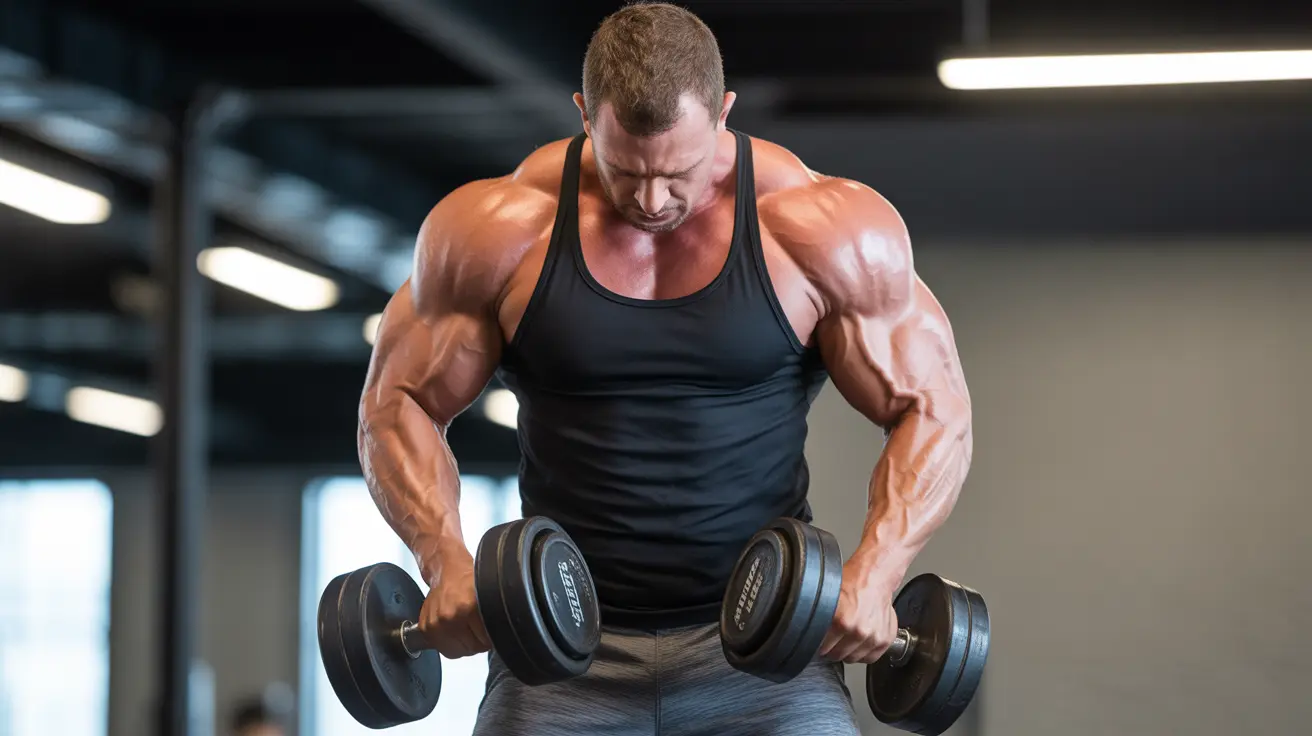Whether you're looking to build stronger arms or enhance your overall strength training routine, hammer curls are a powerful exercise worth mastering. This variation of the traditional bicep curl targets multiple muscle groups and offers unique benefits for both aesthetic and functional strength development.
In this comprehensive guide, we'll explore exactly what muscles hammer curls work, how to perform them correctly, and why they might be the missing piece in your arm-building arsenal.
Understanding the Muscles Worked by Hammer Curls
Hammer curls primarily target three key muscle groups:
- Brachioradialis (forearm muscle)
- Biceps brachii
- Brachialis
The neutral grip position used in hammer curls particularly emphasizes the brachioradialis muscle in your forearm, while still effectively engaging the biceps and brachialis. This comprehensive muscle engagement makes hammer curls especially effective for building balanced arm strength and size.
Benefits of Including Hammer Curls in Your Workout
Adding hammer curls to your training routine offers several distinct advantages:
- Enhanced forearm development
- Improved grip strength
- Balanced muscle development
- Reduced wrist strain
- Increased functional strength
The neutral grip position used in hammer curls places less stress on your wrists compared to traditional bicep curls, making them an excellent option for those with wrist sensitivity or previous injuries.
Proper Hammer Curl Technique
To maximize results and prevent injury, follow these key steps:
Starting Position
- Stand with feet shoulder-width apart
- Hold dumbbells at your sides
- Keep palms facing your body
- Maintain neutral wrists
Execution
- Keep upper arms stationary
- Curl weights toward shoulders
- Maintain controlled movement
- Squeeze at the top
- Lower weights slowly
Focus on maintaining proper form throughout the movement, avoiding any swinging or using momentum to lift the weights.
Common Mistakes to Avoid
Watch out for these frequent errors that can reduce effectiveness and increase injury risk:
- Swinging the weights
- Using too heavy weight
- Moving too quickly
- Allowing elbows to drift forward
- Breaking wrist position
Programming Hammer Curls Effectively
For optimal results, consider these programming guidelines:
- 3-4 sets of 8-12 repetitions for muscle growth
- 2-3 times per week as part of your arm training
- Alternate with traditional bicep curls
- Allow 48 hours between arm workouts
Frequently Asked Questions
What muscles do hammer curls work, and how do they help build bigger arms?
Hammer curls primarily work the brachioradialis, biceps brachii, and brachialis muscles. They contribute to arm size by developing the often-neglected forearm muscles while still targeting the biceps, creating more complete arm development.
What are the main benefits of doing hammer curls compared to regular bicep curls?
Hammer curls offer enhanced forearm development, improved grip strength, and less wrist strain compared to regular bicep curls. The neutral grip position allows for heavier weight handling and better overall arm development.
How do you properly perform hammer curls for maximum muscle growth and safety?
Stand with feet shoulder-width apart, hold dumbbells with palms facing each other, keep upper arms stationary, and curl the weights toward your shoulders while maintaining strict form. Focus on controlled movements and proper squeeze at the top of each rep.
Can hammer curls improve grip strength and help with everyday activities?
Yes, hammer curls significantly improve grip strength due to the neutral grip position and forearm engagement. This translates to better performance in daily activities like carrying groceries, opening jars, and handling tools.
Is it better to do hammer curls or bicep curls for balanced arm development?
For optimal arm development, it's best to include both hammer curls and traditional bicep curls in your routine. Each variation targets the arm muscles slightly differently, creating more complete and balanced development when used together.




